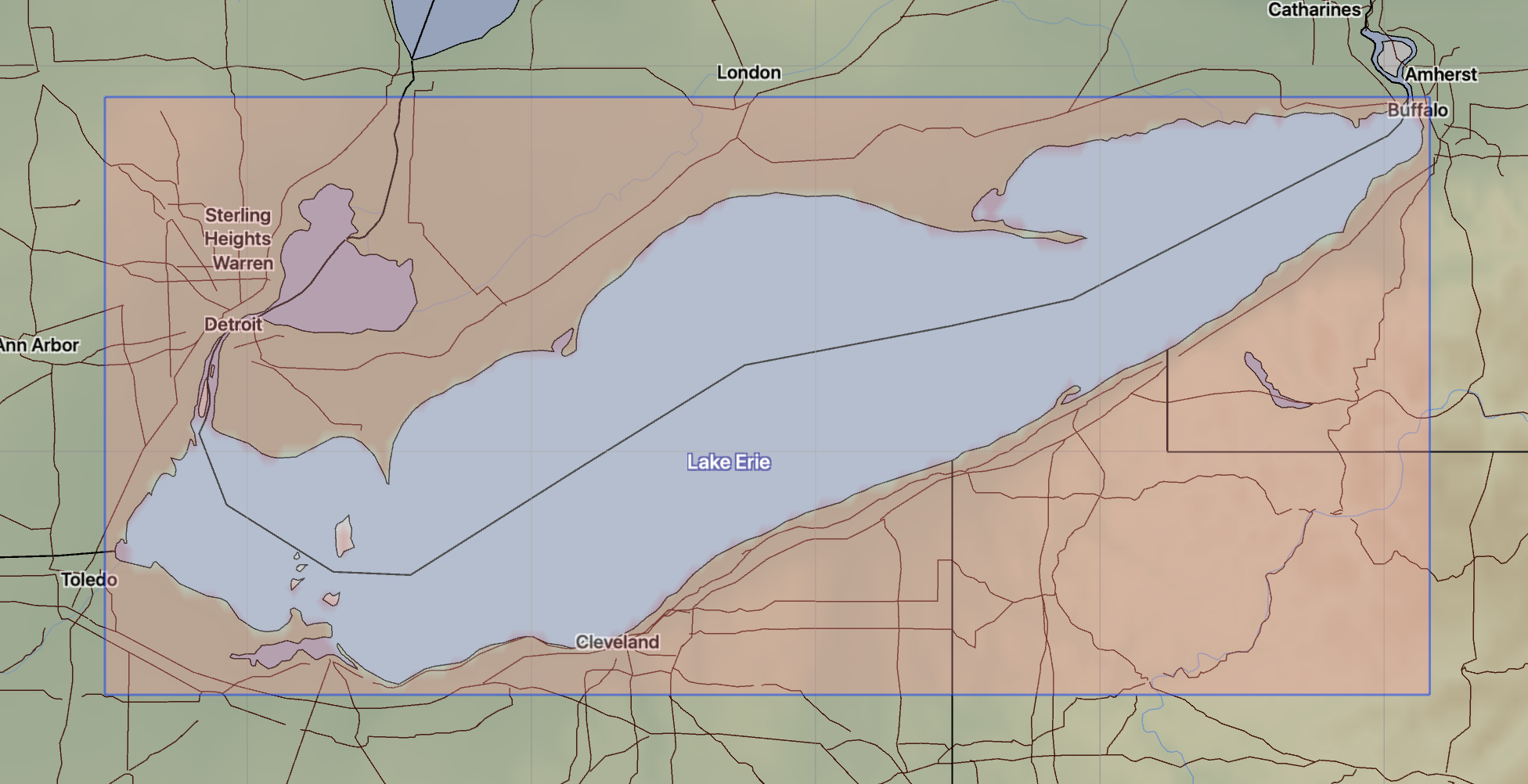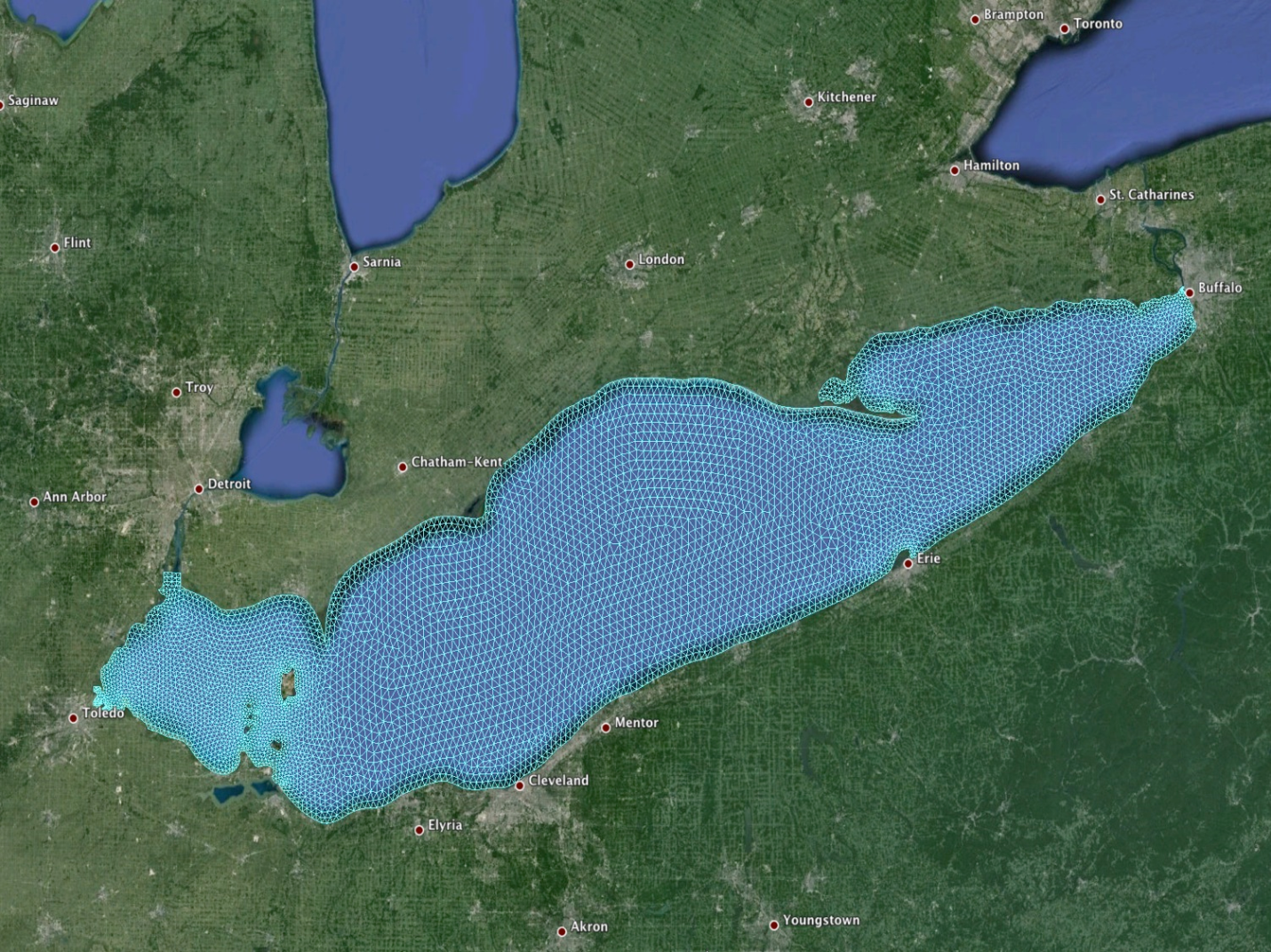
OFS Lake Erie Currents
| Provider: | Center for Operational Oceanographic Products (NOAA) |
| Model scope: | North American Great Lakes |
| Update frequency: | every 12 hours |
| Resolution: | 0.3nm, 0.6km |
| Model duration: | 49 forecasts starting at 0 hr, ending at 3 days |
| Parameters: | current |
| GRIB model date: | Wed Dec 17 12:00:00 2025 UTC |
| Download date: | Wed Dec 17 14:43:19 2025 UTC |
| Download delay: | 2hr 43min |
Note: the Download delay is the amount of time required for the GRIB model to compute its forecast and then for the LuckGrib cluster to download the data and make it available. The LuckGrib delay is generally less than 10 minutes, the remainder of the delay is the model compute time.
Description
The following text has been taken from the OFS site which describes this model:
The upgraded Lake Erie Operational Forecast System (LEOFS) was jointly developed by NOAA/National Ocean Service’s (NOS) Center for Operational Oceanographic Products and Services (CO-OPS) and Office of Coast Survey (OCS), the Great Lakes Environmental Research Laboratory (GLERL), the NOAA/National Weather Service’s (NWS) National Centers for Environmental Prediction (NCEP) National Central Operations (NCO), and the University of Massachusetts-Dartmouth.
The NWS and NOS work together to run LEOFS operationally on NOAA’s High Performance Computing System (HPCS). By running on NOAA’s HPCS, LEOFS has direct access to National Weather Service operational meteorological products that are required for reliable operations.
Grid
 https://tidesandcurrents.noaa.gov/images/leofs_model_grids.png
https://tidesandcurrents.noaa.gov/images/leofs_model_grids.pngThe Lake Erie OFS model is calculated using a bathymetry following irregular grid with over 6,100 nodes. The results of this computation are then sampled, by OFS, into a regular latitude / longitude aligned grid. The data on this regular grid are then converted to GRIB format by LuckGrib.
Additional information
For additional information, see: